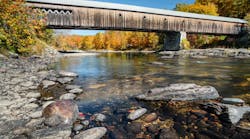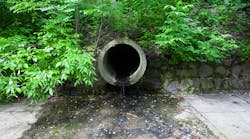Stormwater programs are regulated at the state level and administered at the local level, so why should you care about what happens in our sector at the national level? This is a fair question and one that deserves thoughtful response.
National Topics Impact Stormwater Programs
The most straightforward response regarding the motivation to consider the national context for our sector is simply this: there’s a lot going on in Washington, D.C.
Let’s start with the Infrastructure Investment and Jobs Act (IIJA), otherwise known as the Bipartisan Infrastructure Law (BIL), which has authorized the most significant amount of investment into the water sector — including the stormwater sector — that has ever occurred at the federal level. The legislation includes major increases in federal grants and loan programs, including the Clean Water State Revolving Fund (SRF) and the Overflow and Stormwater Grants (OSG) programs, as well as planning and implementation grants for communities specifically to address stormwater challenges. The law is also helping build a network of stormwater Centers of Excellence around the country to lead and coordinate on research related to stormwater topics.
Of course, there is the ongoing issue of defining Waters of the United States (WOTUS), which has been volleyed back and forth over the last few administrations. The fates of elements within MS4 programs — especially those in arid climates — have been impacted by these rulings in recent times. Other policy developments have been brewing: the National Pollutant Discharge Elimination System (NPDES) Electronic Reporting (or “E-reporting”) Rule mandates that all permitting documentation be provided in digital formats in data fields for MS4 programs by the end of 2025; and the Clean Watershed Needs Survey (CWNS) is the U.S. Environmental Protection Agency’s (EPA’s) periodic effort to capture needs for capital investment within wastewater and stormwater programs across the country. Both initiatives are significant and require close and continuous engagement to track and understand.
These are just samplings of things to track at EPA and on Capitol Hill these days in the stormwater sector.
Help Shape the Sector
While the number and scale of activities that tie to stormwater at the national level is overwhelming, it’s evident that the efforts of national-level organizations have started to move the needle.
The most obvious example is the large scale of authorized investments in stormwater in the BIL, as previously noted — but beyond this is the milestone of including stormwater as a separate category in the American Society of Civil Engineers’ Report Card for America’s Infrastructure. This inclusion puts our sector at the adult’s table of infrastructure for the first time. A benefit of working in a relatively young and immature sector is the ability to more effectively make changes to policy and the sector.
Many similar examples exist that can illustrate the value of tracking activities at the federal level. And, as our sector continues to mature, it is more likely than not that these dynamics will only increase. Being aware of national issues puts us in the position to effectively impact results at the local level.
Published in Stormwater magazine, November 2022.






